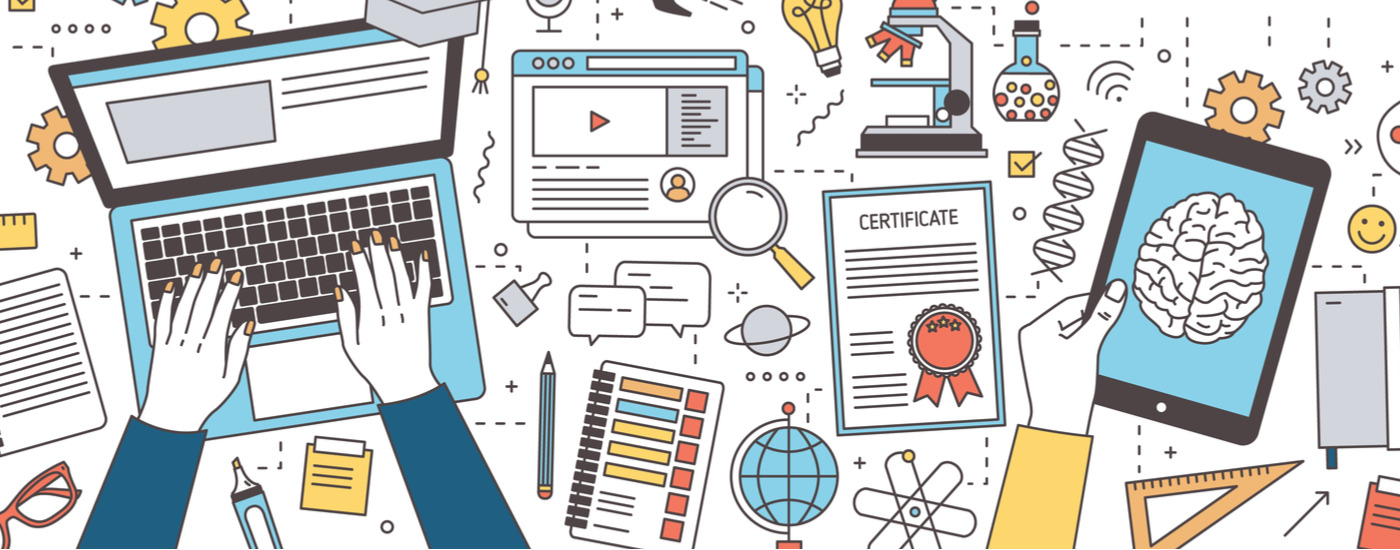Reframing Universal Design for Learning
Updated: June 18, 2019
In the webinar, Universal Design for Learning: The Hidden Chapters, author Thomas Tobin expands on his book, Reach Everyone, Teach Everyone: Universal Design for Learning in Higher Education. In the book, Thomas and co-author, Kirsten Behling, discuss how inclusive design is being used at institutions, but this webinar aims to cover new topics surrounding universal design.
Throughout the webinar, Thomas discusses the challenges associated with pursuing universal design at your learning institution, defines universal design for learning (UDL), and details how to convince leaders that UDL supports retention, persistence, and satisfaction among the student body.
What Is UDL?
Universal design for learning doesn’t have a simple definition. Some may say it’s a way to connect with all learners, others might define it as a way to level the instructional playing field, both of which are true statements.
Thomas says, “UDL means that when we design for the interactions that we have with one another […] You can design those interactions so that there are multiple ways of people staying engaged with that interaction.
Another way to define UDL is by the “plus-1” ideology, which is a simplified way to think about UDL. He says, “It’s a way to simplify the multiple means of engagement, representation, action, and skill.” The plus-1 practice gives students more than one way to interact with content, materials, other students, instructors, and assignments.
UDL is all about giving learners options.
Challenges That Arise with UDL
One of the main objectives for UDL advocates is to gain traction at and support from their institution. The question is, how?
A challenge that goes hand-in-hand with inclusive design is that it’s often seen as something that’s reserved for people with disabilities. However, this idea can negatively affect UDL’s legitimacy at institutions since senior leadership may think of inclusive design as something that only benefits a small percentage of learners.
The idea that UDL benefits learners with disabilities is right, and it’s important to design for accessibility. However, it’s a misconception that UDL doesn’t aid all learners.
How can you talk to senior leadership at your institution about UDL in a way that shows its value to the institution as a whole?
The Push for Inclusive Design
Those in leadership roles care about three things: persistence, retention, and satisfaction among students. Thomas indicates that the best way to gain their support for UDL is to speak their language and to highlight that UDL helps drive all three of those factors.
How to Talk About UDL
One thing to reiterate to decision makers when discussing UDL with them is that it’s not about meeting legal requirements, it’s about offering choices to students. It provides multiple ways to engage, to share information, and to demonstrate skills.
Two of the most significant challenges that students face are money and time management. The former can be addressed through financial aid and scholarships, but the latter is a bit more difficult to solve. However, UDL addresses the stress that students face in managing their time since it allows multiple means of interaction. Giving students the option to listen to course reading materials rather than read it enables them to review the content while they are driving. At the same time, students who must or prefer to read from the textbook still have that option.
The key is to dispel the myth that UDL is the equivalent to making accommodations for individual students; instead, it’s a way to think outside the box and to offer students choices that support success in the classroom.
A Matter of Time Management
Ask yourself, “How many learners don’t come to class as prepared as they should be due to having other responsibilities like work and family?”
Many students come to class underprepared because they don’t have the time to engage with content in a way that is best for their busy lives. This leads to lower retention rates because underprepared students have a hard time demonstrating the skills expected of them and earn poor grades.
Institutions should consider implementing UDL since it gives students several ways to interact with materials and eases the frustration that many students face regarding time management.
Reframing Universal Design for Learning
The bottom line is that you need leadership buy-in to implement UDL into your institution. If there’s one takeaway you should take from Thomas’ webinar, it’s that reframing inclusive design to show it’s real value to an institution is the key to gaining support from senior leadership.
When talking about UDL, reiterate that it provides access and is relevant to all members of the student body.
Why UDL?
There is value in universal design for learning, the challenge is communicating that value. It’s critical to understand that UDL creates expert learners that are adaptable and able to pick up new information at the drop of a hat. Giving students more of a say in how they learn and how they demonstrate their skills is a step in the right direction.
So, what should your next steps be? Find others at your institution that are passionate about UDL and work together to advocate and raise awareness for inclusive design.
After all, there is strength in numbers.
Watch the full webinar below!
Further Reading

Subscribe to the Blog Digest
Sign up to receive our blog digest and other information on this topic. You can unsubscribe anytime.
By subscribing you agree to our privacy policy.








